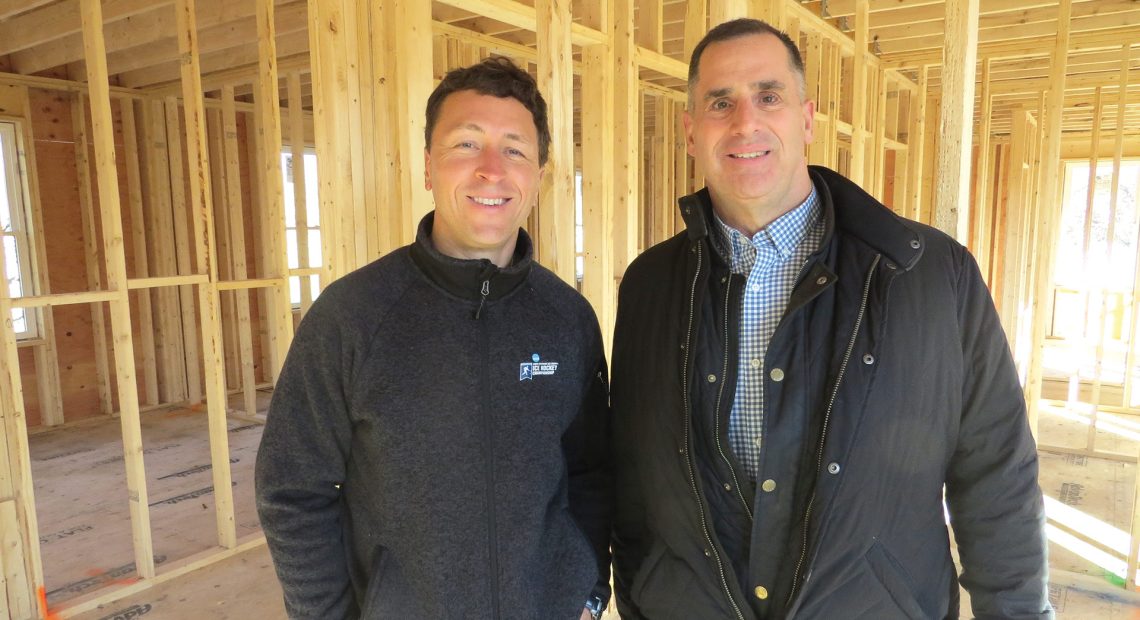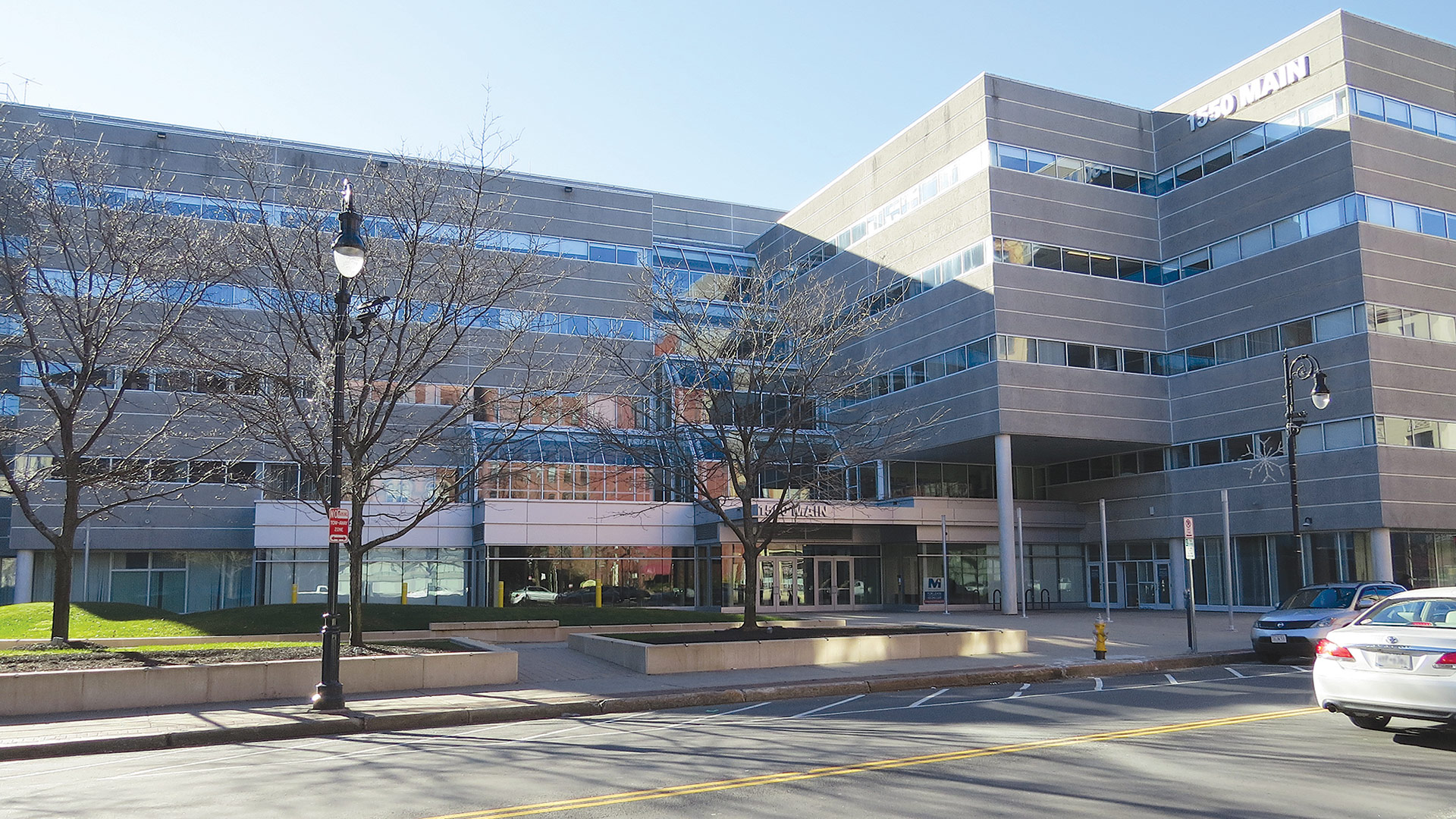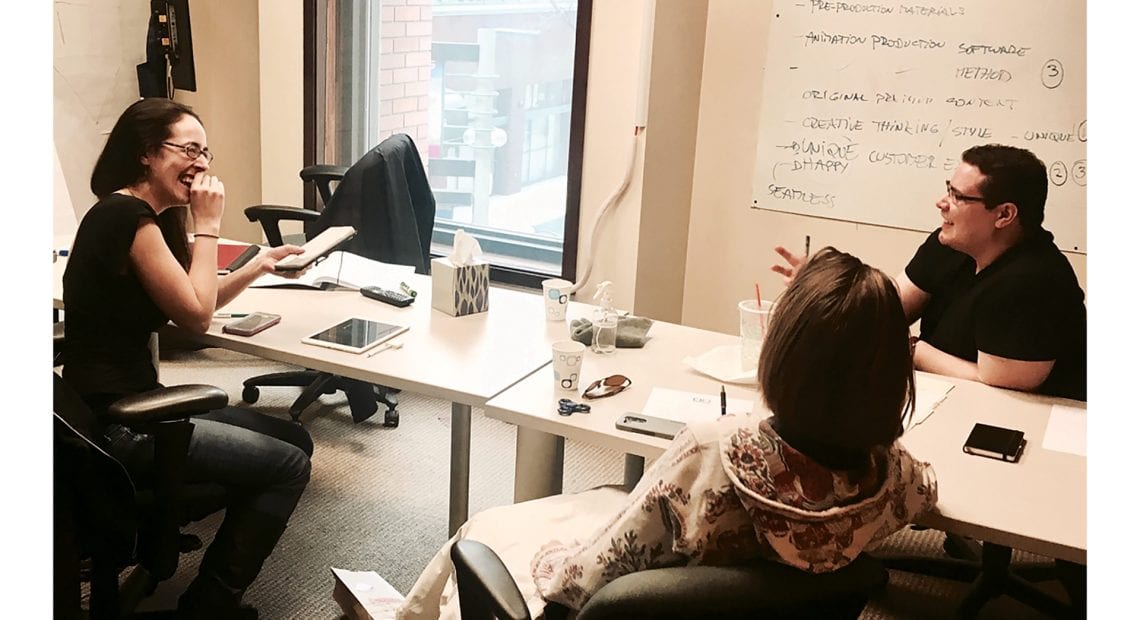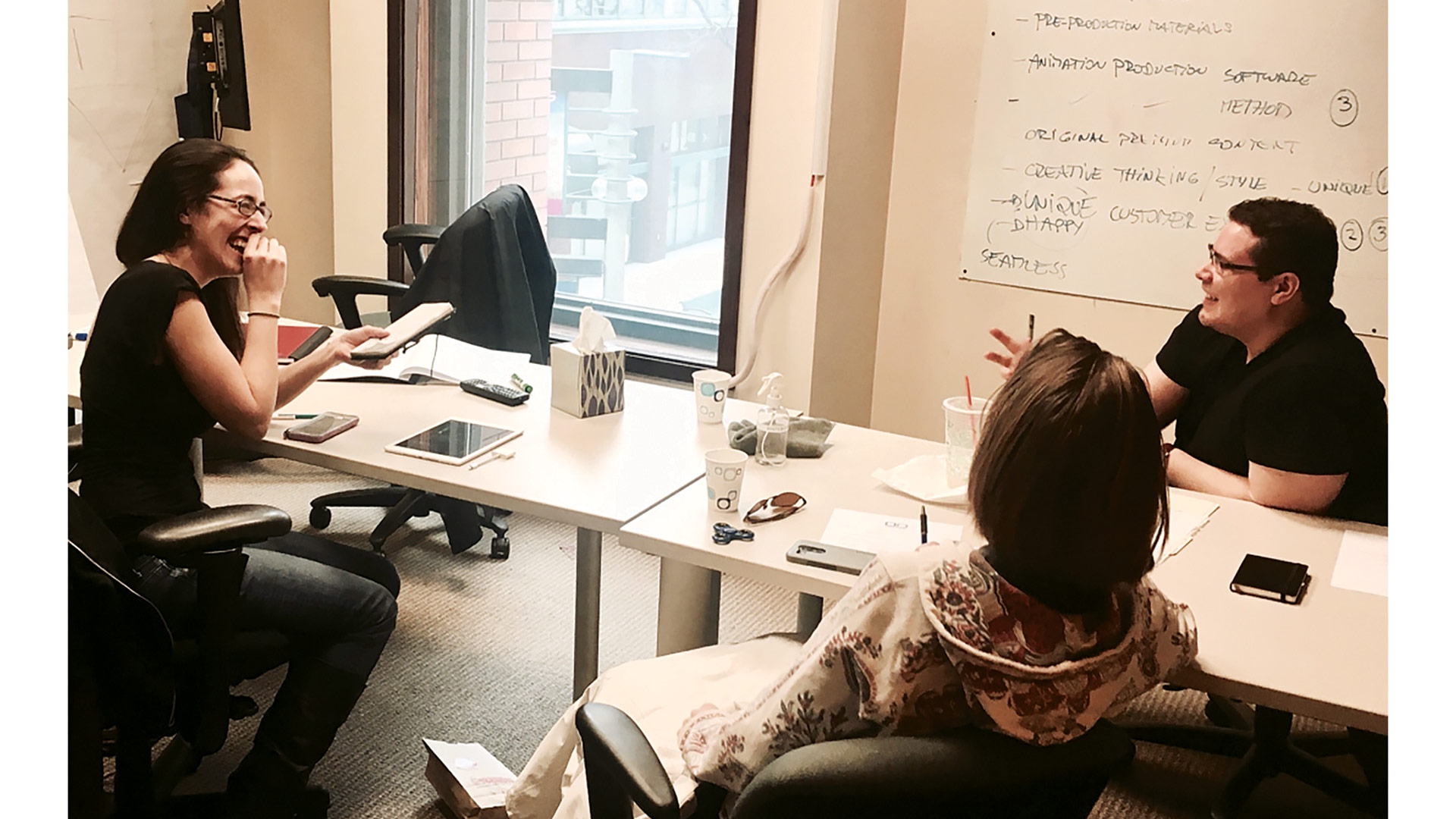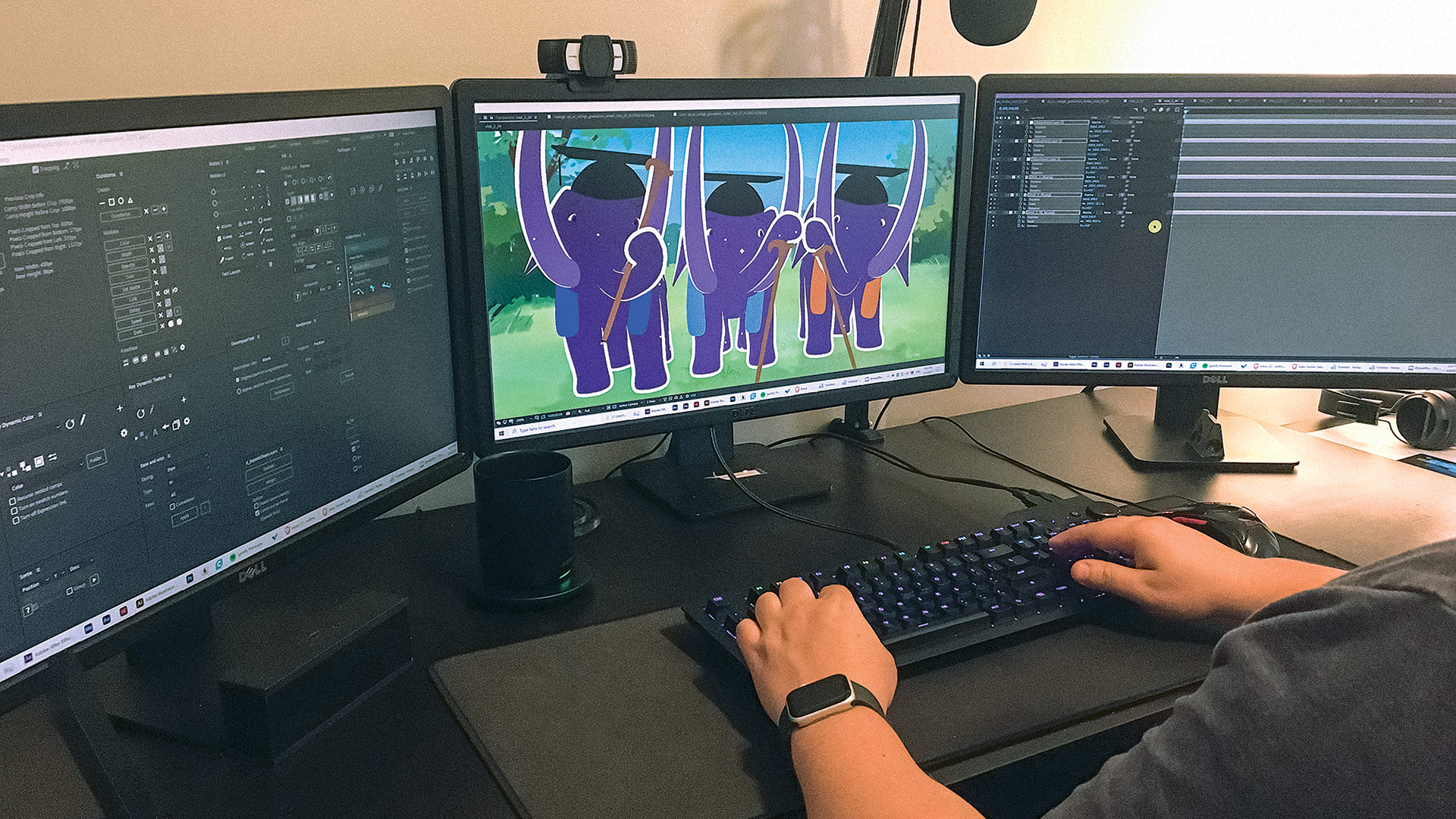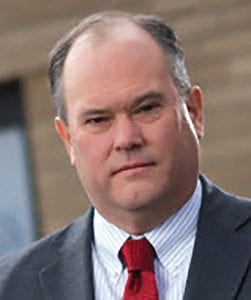Improving on the Model
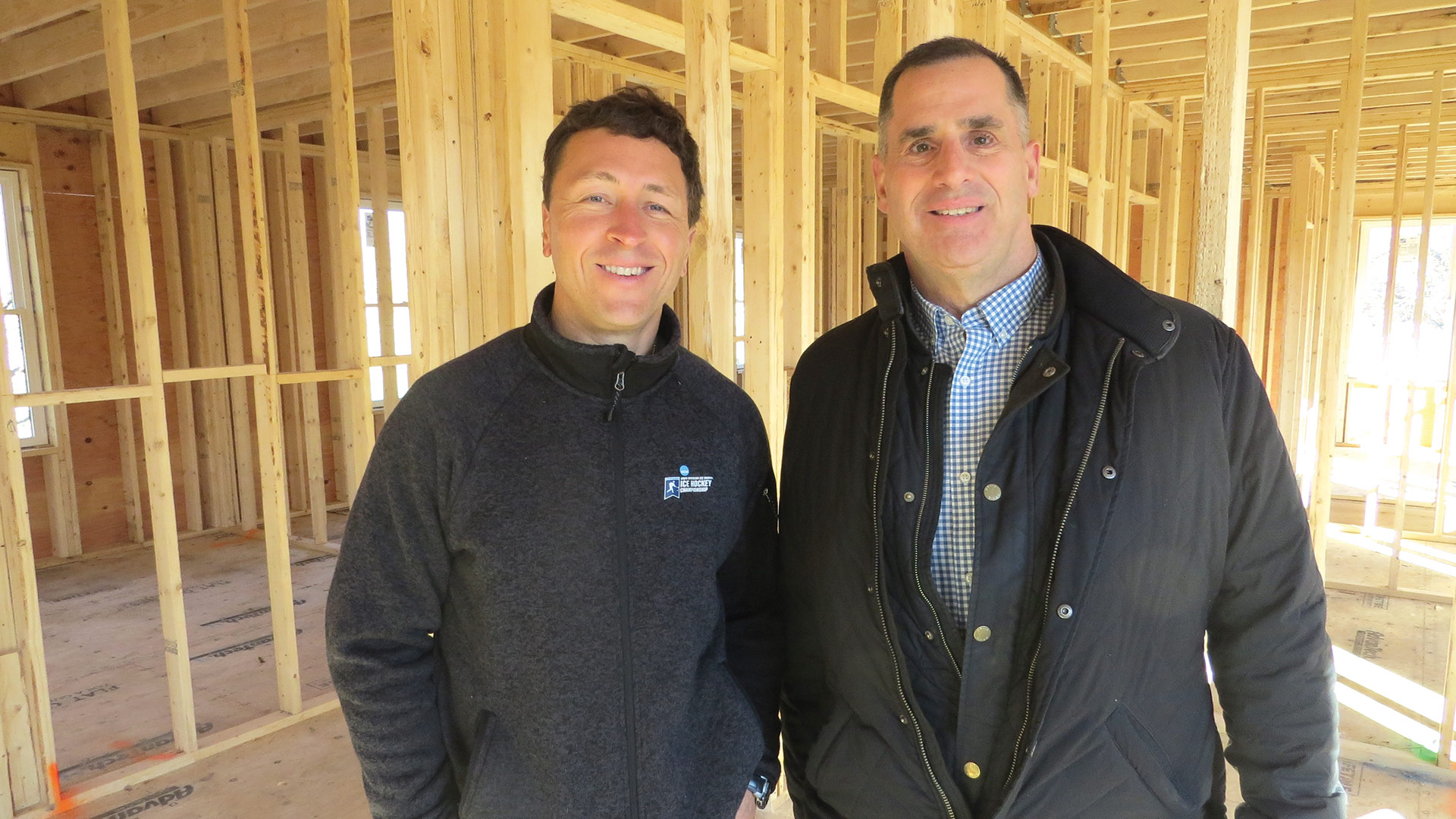
Chris Orszulak, left, and Bill Laplante at the Modern Workspace facility they are building in East Longmeadow.
Before going into some detail about the new co-workspace initiative he’s part of in East Longmeadow, Chris Orszulak first wanted to talk about another project he partnered on in the town next door.
Specifically, he referenced restoration of the historic Brewer-Young mansion in the center of Longmeadow and, even more specifically, conversion of its third floor into what has become known as 734 Workspace, to match the mansion’s address on Longmeadow Street.
He started there because it was success in that endeavor that ultimately inspired the East Longmeadow project and, before it, something similar on the Cape.
Indeed, when they conceived the new co-work facility in Longmeadow in the year before the pandemic, Orszulak, a financial planner by trade, and partners Andrew Lam, Henry Clement, and Jason Pananos were not exactly sure what they would find.
What they found — and it took a while for things to fully shake out because the pandemic hit just after they opened, and it changed the dynamic in many respects — is that there are professionals, and a healthy number of them, who don’t want to work in a large office, but also don’t want to work at home — at least all the time.
Many need a place where they can bring clients; where they can access reliable, high-speed internet; where they can have some privacy; where they can get some work done; and where they can have their mail sent.
“What this has turned into is the evolution of working from home and remote work that is permanent now in the workforce, post-pandemic.”
And, yes, 734 Workspace became that place — a place where there is remote work, but with some twists and some style. There are 17 small offices there, all of them are leased out, and there is a good-sized waiting list, Orszulak noted.
“What I found attractive about the model, pre-pandemic, was simply its flexibility,” he explained. “When you have a membership with us, it’s month to month, and we include everything with your membership. But what this has turned into is the evolution of working from home and remote work that is permanent now in the workforce, post-pandemic.
“And the reasons why people would join a place like ours are what you might expectm” he said. “You can’t get everything you want to get done at home; you’re distracted by your pets, your kids, your husband, your wife; you need a change of scenery — you’re not productive at home.”

Modern Workspace was in many ways inspired by the success of an earlier venture on the third floor of the Brewer-Young mansion in Longmeadow.
This model, this change of scenery, has worked so well that Orszulak, partnering with Pananos and East Longmeadow-based luxury homebuilder Bill Laplante, moved with confidence and optimism to create something similar in a commercial condominium in Chatham on the Cape.
Further inspired by success there, they are moving forward aggressively with construction of a unique co-working space on a small lot owned by Laplante in East Longmeadow that will be branded Modern Workspace — a name that will eventually go on all the facilities in the portfolio.
Unique — and modern — for several reasons, starting with energy efficiency. Indeed, this will be a net-zero building, said Laplante, adding that it features a solar array on the roof that will provide 100% of the electricity for heating, cooling, and hot water; a car-charging station; and more.
It also features 24 individual spaces across two floors; multiple conference rooms; printing, scanning, and copying equipment; 24/7 access; and more, said Orszulak, adding that the doors are expected to open late in the spring of 2024.
There has been considerable interest in the East Longmeadow facility already, said the partners, adding that results there will help determine if and where this concept might go next.
Indeed, Orszulak stressed that Modern Workspace is certainly scalable, but the model will likely work only in communities like Longmeadow and East Longmeadow, which don’t have existing co-workspace but do count large numbers of professionals among the population base.
The partners are considering Wilbraham and some communities in Northern Conn., such as Suffield and Simsbury. But for now, they are focused on the new East Longmeadow facility, getting it off the ground and on a path to success.
“We’re really excited to see how it does here in East Longmeadow,” Laplante said. “And if does well, and we expect that it will, we’ll see where we can go from there.”
For this issue and its focus on commercial real estate, BusinessWest talked with Orszulak and Laplante about this latest venture in the broad and ever-changing co-work realm, and what it might lead to down the road in terms of further expansion.
Right Time, Right Place
As he talked about this expansion of the model forged in Longmeadow, Orszulak first addressed the larger topic — the elephant in the room, if you will — of remote work and its long-term future.
And he was direct in his opinion that there is a large degree of permanence to what is being seen in most workplaces in terms of not simply flexibility, remote work, and hybrid schedules, but also the notion that, for many professionals, there will be a need for a place that isn’t home and isn’t the office, at least in the traditional sense.
“The hybrid model is the model of the future, where there’s partial work from home, and you also work from an office space,” he explained, adding that, in his estimation, this office space will not be in an office building or office park, but a smaller space in a co-working facility that will be used a few days a week, often with the employer reimbursing for space rental.

Chris Orszulak, left, and Bill Laplante say Modern Workspace was conceived and designed to reflect changes in the workplace they believe are permanent.
“This is a permanent thing,” he went on. “We’re in the very early innings of complete generational change to the way people work; it will never revert back completely.”
It is with this mindset, as well as the high degree of success recorded at the Brewer-Young mansion, that Orszulak and his partners are moving forward with the facility in East Longmeadow, which is quickly taking shape.
As they offered a tour of the work in progress, Orszulak and Laplante pointed to rows of studs outlining future individual offices and other facilities, such as a conference room and common space, and gestured to where flat-screen TVs, standing desks, and storage would be in those offices.
“You can basically come in with your laptop and immediately work,” said Orszulak, adding that he expects some tenants will come in several days a week, others a few, and still others maybe just one.
He expects this new facility will attract roughly the same demographic as the Brewer-Young mansion, which includes several lawyers, a few financial advisers, several entrepreneurs with various types of small businesses, and other professionals. There are men, women, both younger and older professionals — “it pretty much appeals to everyone.”
Also appealing are the various levels of membership — from simply having a mailing address to a 10-day membership, to a ‘common-space membership,’ which enables members to come in as many days a week or month as they want to use a common space that includes soft chairs, high-top tables, and stand-up desks and use of the conference room; from a ‘dedicated common-space membership’ (a member has his or her own desk) to rental of an office. The rates vary accordingly, from $150 for a mailing address to $850, on average, for office rental.
The lawyers within the membership base provide an effective snapshot of the type of client the partners are attracting there, and expect to attract at the East Longmeadow facility.
“In many cases, it’s attorneys who had office space, but they didn’t require as much office space as they had rented,” Orszulak said. “Some of them might be winding down the practice, but they don’t want to stop working, so they’ve reduced the size of the practice, and this facility gives them an area they can go to, one that gives them a great deal of flexibility.”
Like the 10-day membership, which, as that name suggests, enables members to use the various facilities 10 days a month.
“There are many people who permanently work from home, but they would prefer not to have their home be the place where they meet clients,” he explained. “So they’ll just use our conference room for meetings, and we have a really simple app on your phone where you can book time and meet clients. There’s a handful of attorneys that just do that; they’ll use the conference room half a dozen times a month.”
Meanwhile, some members just want a business address, he went on, adding that there are mailboxes for these individuals, as there will be in East Longmeadow.
Getting Down to Business
Overall, each of the successful elements of the model created in Longmeadow and followed in Chatham — where the partners have found a strong market for co-work space among permanent residents, professionals with summer homes in that area, and even those on vacation for two weeks who need a place to take a Zoom meeting — will be used in East Longmeadow, where the setting will be decidedly different.
Indeed, while the Brewer-Young mansion is more than a century old, historic, and in most all ways energy-inefficient, the facility under construction in East Longmeadow will be anything but.
“This will be a net-zero project; we will not be purchasing any electricity or gas — there will no gas to the property,” Laplante explained, adding that the building will be ultra-modern in many other ways as well, from reliable, high-speed internet to the car-charging stations.
And while they proceed with construction of the East Longmeadow facility, the partners are already thinking about where they might go next with the concept, although they obviously want to see how this space does before expanding further.
Overall, they believe it will work in mostly residential communities with many working professionals, scenarios where people can live and work in the same town, but not necessarily in the same place.
“We don’t see someone from South Hadley jumping in the car and going to the Brewer-Young mansion for their co-working office space,” said Orszulak, adding that several members at the facility actually bike or walk to the ‘office.’
Elaborating, he said there are co-work spaces that people can get on a highway and drive to, but there is an increasing need for something right around the corner.
Given those patterns, the concept could work in other area communities in Western Mass., such as Wilbraham, as well as Connecticut, he went on.
“We think Simsbury in Connecticut is a great market,” he noted, adding that other communities in that area, such as Suffield, may be attractive landing spots as well. “The towns are very similar to Longmeadow and East Longmeadow, and we see great potential there.
“We want to be smart about where we grow; I think we’re learning more as we talk to more people, and we’re learning a lot here,” he said, adding that there are certainly challenges to expansion, including finding appropriate locations and building facilities, often from scratch. “It’s a scalable model.”
For now, though, they are laser-focused on opening the doors in East Longmeadow. They said they have already received a good amount of interest and expect there will be much more as the facility starts to take shape.
Co-working is not a new concept, per se, but it continues to evolve, and this model represents what would be considered state-of-the-art.
It represents work in progress — in every sense of that phrase.



